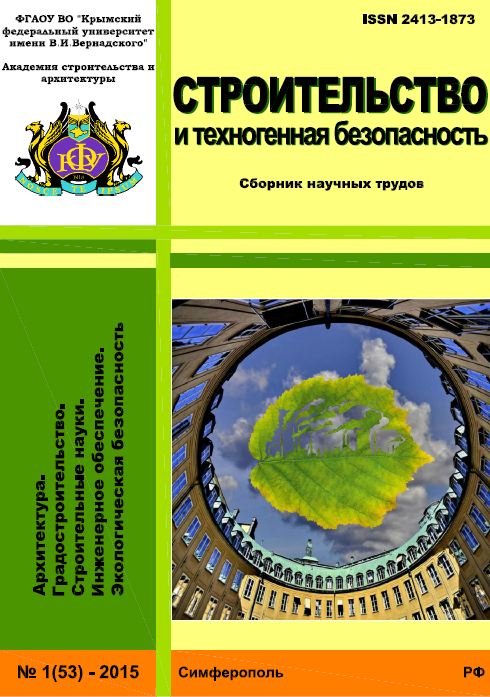The purpose of the work is to develop typological recommendations for the designed buildings in Simferopol based on the architectural analysis of natural and climatic conditions. The study requires a detailed study of the temperature regime, temperature and humidity regime, temperature and wind regime, solar radiation and the bioclimatic characteristics of the construction area. Subject of the study: Human heat sensations are influenced by the interaction of factors such as temperature, solar radiation, air humidity and the speed of its movement. Depending on the combination of these factors, a person's heat perception can vary. Materials and methods: To achieve this goal, the following values were analyzed: average monthly outdoor temperature, relative humidity, wind speed and direction, and solar radiation. To assess the effect of climate on the human body, an equivalent-effective temperature and a normal equivalent temperature were calculated. AutoCAD and Microsoft Excel software were used to build the graphs. Results: The conducted research allowed us to determine the boundaries of comfort zones, the influence of the Simferopol climate on the human body. Conclusions: The results of the analysis of natural and climatic factors allow us to determine the typological requirements for the choice of architectural solutions: architectural planning, structural and engineering means of regulating the microclimate in buildings and buildings for Simferopol, taking into account its climate.
climate, architectural analysis, typology, heat perception, bioclimatic indicators
1. Ayzenshtat B.A., Ayzenshtat L.B. Formula dlya rascheta ekvivalentno-effektivnoy temperatury. - Voprosy biometeorologii, 1974, Nº 20(101), s. 81-83.
2. Gorbunov R.V., Gorbunova T.Yu., Drygval' A.V., Tabunschik V.A. Izmenenie temperatury vozduha v Krymu // Social'no-ekologicheskie tehno-logii. 2020. T. 10. Nº 3. C. 370-383.
3. Degterev A.H. — Izmenenie klimata Kryma za poslednie desyatiletiya // Voprosy bezopasnosti. - 2020. - № 2. DOI:https://doi.org/10.25136/2409-7543.2020.2.32821 URL: https:
4. Zhuk V.O., Ergina E.I. Analiz sovremennoy meteorologicheskoy situacii v predgornom Krymu // Uchenye zapiski Krymskogo federal'nogo universiteta im. V.I. Vernadskogo. Geografiya. Geologiya. 2018.
5. Lickevich, V. K. Zhilische i klimat / V. K. Lickevich. - Moskva: Stroyizdat, 1984. - 288 s.
6. Myagkov M.S., Gubernskiy Yu.D., Konova L.I., Lickevich V.K. Gorod, arhitektura, chelovek i klimat. M Arhitektura S 343 s.
7. Svod pravil SP 131.13330.2020 "SNiP 23-01-99* Stroitel'naya klimatologiya" (utv. prikazom Ministerstva stroitel'stva i zhilischno-kommunal'nogo hozyaystva RF ot 24 dekabrya 2020 g. N 859/pr).
8. Stefanovich A.A., Voskresenskaya E.N. Izmeneniya kompleksnyh bioklimaticheskih pokazateley v Krymu s serediny HH veka // Ekologiya cheloveka. 2023. T. 30, Nº 1. C. 65-77.
9. Hentschel G. A human biometeorology classification of climate for large and local scales. WMO/HMO/UNEP Symposium on Climate and Human Health. Leningrad, 1986. Vol. I. WCPA - No. 1, WMO.
10. Missenard F. Température effective d'une atmosphere Généralisation température résultante d'un milieu. In: Eneyclopédie Industrielle et Commerciale, Etude physiologique et technique de la ventilation.





